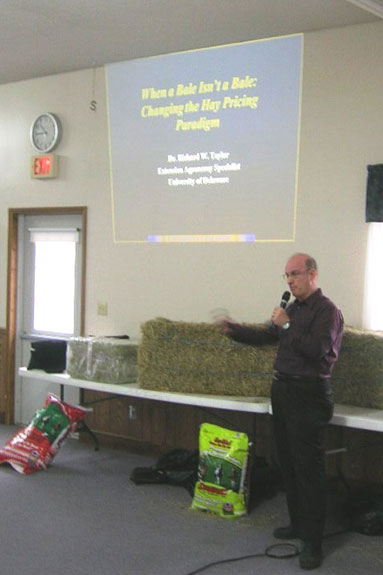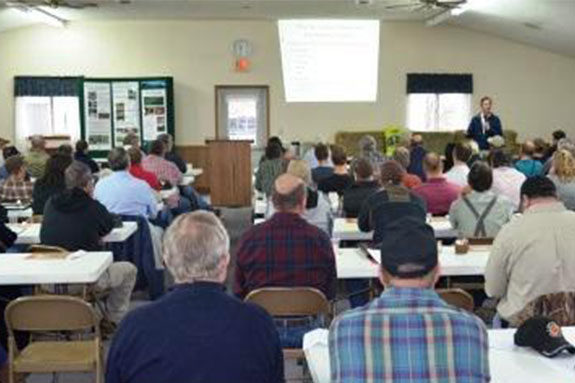This was just three of the topics covered in a series of Hay and Pasture Conferences recently held in Maryland and Delaware.
A total of nearly 300 people attended the Delmarva, Southern Maryland and Tri-State (Maryland, West Virginia and Pennsylvania) conferences, with the latter two having record attendance.
Ed Rayburn, extension forage specialist, West Virginia University, reported results of a baleage harvest and storage procedures survey conducted in West Virginia.
Rayburn, in cooperation with extension agents and farmers throughout the state, is coordinating a project to correlate factors such as stage of maturity at harvest, date of harvest, moisture content, thickness (layers) of plastic, extent of stretch, etc. with the condition, pH and chemical analysis of the baleage coming out of storage.
Rayburn made a second presentation on yield and economics of no-till planted summer and fall annual forages. Annual forages can supplement production of perennial grasses and legumes during periods of feed shortage due to drought or other weather conditions but also can be useful as smother crops in preparation for seeding new areas or preparing an old, rundown sod area for reseeding.
Mike Kuhns, district sales manager for Chemgro Seeds, Selinsgrove, Pennsylvania, discussed the why and how of hay preservatives.
In addition to covering the characteristics and effectiveness of propionic acid-based hay preservatives, he shared information on potassium sorbate, a new developments in preservative materials, and advantages it is reported to have over organic acid-based products.

Richard Taylor, extension agronomist, University of Delaware, highlighted some of the pitfalls for both hay buyers and sellers when hay is priced by the bale rather than by the ton.
Buyers, especially pleasure horse owners with one or two horses, frequently buy by the bale and rarely take into account bale weight. They tend to shop around for the best per bale price but don’t ask if it is a 40-, 60- or 80-pound bale.
Jim Glancey, professor of mechanical engineering, University of Delaware, pointed out the different types and configurations of hay moisture sensors and the reliability and accuracy of the values obtained.
He pointed out that when a manufacturer or retailer says that their particular unit is accurate to within ± 1% of the actual moisture content of the hay, that is probably beyond the actual capability of this technology at the present time, so buyers should be aware that such claims may be unrealistic.
Les Vough, forage crops extension specialist emeritus, reported that University of Maryland N fertilizer recommendations for cool-season perennial grasses are being revised to include a late fall application of 40-50 pound readily available inorganic N.
The revision removes 40-50 pound N from the late winter (green up) application so the overall annual recommendation remains the same.
These conferences were so-sponsored by the Maryland-Delaware Forage Council, University of Maryland Extension, University of Delaware Cooperative Extension, USDA Natural Resources Conservation Service and Southern Maryland RC & D. FG
PHOTOS
TOP: Dr. James Glancey presents a real world perspective on what hay moisture sensors and meters can and cannot do.
BOTTOM: Dr. Richard Taylor discusses the economic value of the nutrients contained in various types and packages/bales of hay. Photos courtesy of Les Vough.











